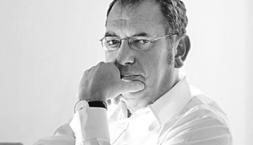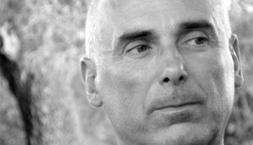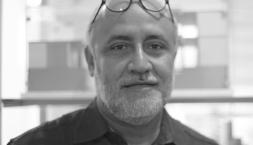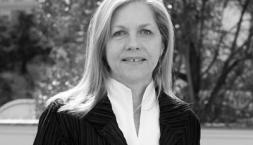Professor in Residence, Department of Architecture, GSD, Harvard University, Cambridge MA, USA
Year Zero to Economic Miracle.
Hans Schwippert and Sep Ruf in Postwar West German Building Culture
By Lynnette Widder
With photographs by Thad Russell
Zurich: gta Verlag 2022
22 x 28 cm [9 x 11 in.]
170 illustrations
320 pages
€ 52 hardcover
ISBN: 9783856764272
How do you rebuild a country destroyed by war? In case of 1945 Germany, how do you rebuild not only buildings and infrastructures, industries and the economy, but also moral standards, democratic structures, and peaceful ties to neighbors and the global community? And what are the roles of architecture and architects in these processes? Lynnette Widder takes us back to the time between German “Year Zero” and the early 1960s to reflect on the relationships of architectural aesthetics with social, political, and economic life. For this endeavor, Widder selected two architects, Hans Schwippert (1899–1973) and Sep Ruf (1908–82) and interprets some of their works as representations of two “distinct approaches to a modern architecture appropriate to the Bundesrepublik Deutschland [Federal Republic of Germany] in its initial decades.” 1
Both architects argued for transparent, light, and modern architectural form, which, after the Second World War, became the widely accepted response to the monumental and traditionalist architecture of Nazi Germany. Both architects built projects of great political importance for the new democratic state, such as Schwippert’s Bundeshaus (parliament) or Ruf’s residence for the West German chancellor, both located in Bonn. Projects of such broad international visibility unavoidably made them public, if not political, personae. Both also became professors almost immediately after the war — Schwippert at the RWTH Aachen and Art Academy Düsseldorf in 1946, Ruf at the Academies of Fine Arts in Nuremberg and Munich in 1947 and 1953. Both architects built advantageous relationships to the new German government, municipalities, and the church, and both felt challenged by the question of what kind of architectural culture could represent the new anti-totalitarian democratic state. All of that made them ideal case studies for Widder’s project.
The book is organized into four main sections. Sections one and four present detailed comparisons of buildings by Schwippert and Ruf, and sections two and three discuss contemporary theoretical discourses in Germany, cultural relationships with the United States, and developments that took place in the building industry. The first section juxtaposes Schwippert’s Bundeshaus in Bonn (1948–49) and Ruf’s Academy of Fine Arts in Nuremberg (1950–54). Despite the country’s severe shortage of housing and construction resources, the Bundeshaus was high on the list of national and international priorities, not only for spatially accommodating the new government but also for representing a new German nation. Schwippert envisioned the Bundeshaus to be “the lightest parliament in the world,” 2 “a literal representation of the new, democratic West German government’s political transparency, exemplified by the glazed walls on either side of the plenary hall.” 3 Schwippert translated this concept of transparency down to the smallest detail of the window frames with an “unerring sense of delicacy and near-illusory lightness in design.” 4 Similarly, Ruf’s Nuremberg Academy embodied transparency through careful detailing of facades while also dealing with the “still-limited palette of materials and methods at the architect’s disposal in the early 1950s.” 5
Ruf’s grappling with transparency was also a negotiation of interior and exterior, of defining a balance between built and vegetated spaces. Despite incorporating different spatial approaches, both Schwippert’s and Ruf’s buildings expressed ideas of transparency and lightness as a representation of democracy, while also exemplifying an architecture and construction practice that was based on a building economy with plain materials and semi-finished products that had to be refined by craftsmen on site.
The second section introduces the German architectural discourse of the 1950s by focusing on two events: the 1951 Darmstädter Gespräch “Mensch und Raum” (human being and space) and the 1953 controversy between Walter Gropius and Rudolf Schwarz known as the “Bauhaus Debate.” The Darmstädter Gespräch, made famous through Martin Heidegger’s lecture “Building Dwelling Thinking,” presents fundamental discussions on, for example, the relationship of space, material, and progressing technology; the juxtaposition of an abstract space of ideas with concrete spatial experience and “dwelling;” or the contrast of conceptually-timeless versus era-expressing architecture. In the Bauhaus Debate, Schwarz questioned the all-encompassing importance of the Bauhaus for contemporary architecture, claiming instead that the Bauhaus was only one of many modern movements in the interwar period, and one that was even damaging to building culture in its rejection of the humanities and architectural history in favor of materialism. In Widder’s words: “For Schwarz, the Bauhaus belonged to the intellectual collapse that had precipitated Germany’s descent into Fascism. It had to be rejected entirely. For Gropius, the Bauhaus was the cradle of a new visual sensibility that was inherent to a global democratic spirit.” 6 Describing the polarizing argumentations of the time — with post-war German architects having the “choice between ‘desperation’ and a ‘return to the foundation’ ” 7 - helps us understand the complexity of “Year Zero” as a concept of simultaneous ending, beginning, and continuing.
Parallel to this discourse, Widder observes that “caution, self-doubt, and the return to first principles could not compete with the immediate demands of the Marshall Plan-facilitated economy.” 8 The German currency reform in June 1948 and the beginning “Economic Miracle” have created their own dynamics of instilling a materialistic dream of middle-class comfort within a social market economy. “Modesty and Internationalism, 1953–58,” the book’s third section, introduces these economic realms through two buildings, the West German Pavilions at the Brussels World’s Fair of 1956–58 (concept by Schwippert, buildings by Ruf and Egon Eiermann, landscape architecture by Walter Russow) and the American Consulate in Munich of 1954–58 by Ruf. Rather than describing the buildings’ programs, layouts, materiality, or details, as Widder did in the first section, the projects are interpreted with respect to the philosophical underpinnings and justifications, on the one hand, and industrial developments transferred from the United States, on the other hand. The World’s Fair buildings and gardens, as well as the consumer design products exhibited conveyed again scripts of transparency, lightness, and modest materiality (when compared to former World’s Fairs), and successfully fulfilled to present a new West German identity of “efficiency and simplicity,” 9 accomplished by the “new, diligent, modest, and decidedly not belligerent West German citizen,” 10 who aspired to be a private and consumer-oriented middle-class member.
Ruf’s American Consulate, by contrast, exemplifies the building industry’s shift from custom-made and semi-finished products to product systems. Ruf, when receiving the contract to build the consulate, had access to the technical drawings for the American consulates in Bremen, Düsseldorf, Stuttgart, and Frankfurt, completed by SOM between 1952 and 1955. This provided him insight into US building developments, such as serial curtain wall systems. For Widder, the consulate marks the shift from Ruf’s earlier design language of minimally dimensioned pieced L-profiles with staggered contours and setbacks to a new language of extruded metal profiles with flatter contours and heavier appearance. This shift resulted in a reduction of transparency and, more generally, in more massive thresholds between inside and outside. Widder generalizes this change for the West German building industry at large: While earlier building production was hampered by material and product scarcity and resulting labor-intensive construction methods, the availability of more sophisticated product systems industrialized the construction site. The new challenge, as Widder explains, had “become how to calibrate the evident material wealth and quality of German industrial production with a political and societal demand for an appropriately modest expression.” 11
Widder returns, in the fourth section, to a close description and interpretation of two buildings, Ruf’s College of Public Administration in Speyer (1957–60) and Schwippert’s renovation of St. Hedwig’s Cathedral in Berlin (1956–63). The two projects exemplify how architecture was changing in the recovering country. Widder observes Ruf’s continued move toward a more massive architectural aesthetic, seeing it as an expression of the American (SOM) influence, the increasing success and confidence of Germany’s industrial production, and the availability of building element systems. Schwippert, in part due to the continued building material shortage in the Soviet sector of Berlin, proceeded with his delicate, labor- and time-intensive detailing, and was internationally praised for his “modest, stringent reconstruction” resulting in architecture of “sobriety and clarity.” 12 Widder also identifies different working modes of the two architects: Ruf, the individual artist, meticulously drew and thus controlled each and every detail; Schwippert, the collective co-creator, sketched and thus offered leeway for verbal negotiations with collaborators, craftsmen, and clients. Ruf’s buildings appear “perfect and complete,” “meticulous and ethereal,” 13 while Schwippert’s buildings exemplify the “ideal of architecture as social enterprise, within which the construction process was bespoke and deliberate.” 14
Throughout the book, Widder demonstrates her admirably sharp observation skills as she unpacks the studied material. For example, she takes to pieces a perspective of an individual room in a home for single men, drawn by Ernst Neufert and exhibited in Darmstadt 1951, observing that the flowers on the sideboard, the fruits on the table, the painting at the wall, and other objects in the room, are unlikely to represent a minimal-income worker’s room but rather address the imagination of a middle-class audience visiting an architectural exhibition. In another example, she meticulously describes the user’s or visitor’s movement through Schwippert’s Bundeshaus. Widder also does not shy away from explaining and interpreting detail and construction drawings. Such meticulous descriptions make us spend time with the presented material rather than quickly consuming an overflow of images, as is so prevalent today.
Between the book’s sections, Widder adds interludes, in which she reflects on unusual archival findings, her work with Ulrich Conrads, her encounter with the Ruf family, and construction drawings. Her homage to Conrads presents personal observations on the 1980s and 1990s. Similarly, the acknowledgement of Notburga and Elizabeth Ruf and their manner of caring, which spans from meticulously preserving Sep Ruf’s documents to hosting guests such as the author, is mainly a private testimonial that might have emotional value to those who have met the protagonists. These interludes reveal that the book is not only meant as a research study on post-war Germany’s struggle for architectural expression, but also a personal testimonial of an architect, writer, an educator attempting to understand her foundations and beliefs, expressed in conclusions such as “I am a totemist of sorts.” 15
Sharing personal memories of her parents or which bus stop to take to visit the Nuremberg Academy might be irritating within a scholarly book on the topic of rebuilding a physically, politically, and morally bankrupt country. However, there is more to it: the final interlude on reading and creating construction drawings is a superb reflection on the relationships of abstract ideas and concrete things, for which construction drawings, or drawings in general, have the potential of being mediators. Widder asks “whether architecture happened first in the mind’s eye or in the hand. Someone had to imagine it. Someone had to make it.” 16 And, maybe, someone had to draw it. Widder’s example of a pew in St. Hedwig’s Cathedral, for which she juxtaposes simple abstract detail drawings that hardly create the image of an object in one’s head with photos that present a beautiful, humble, indeed intense object made of wood and steel, successfully underscore her arguments about the peculiarities and relatedness of ideas, drawings, and objects. Similarly, she identifies job books as mediators between ideas and objects to reveal the “multiple daily acts of negotiation, compromise, acrimony, or resistance that result in a building.” 17 Here, the book serves as a strong example for what architects can offer to art history’s methods of interpretation: “speculative empathy.” 18
Lynnette Widder, Year Zero to Economic Miracle. Hans Schwippert and Sep Ruf in Postwar West German Building Culture (Zurich: gta Verlag, 2022), 18.
As quoted in Widder, Year Zero, 13.
Ibid., 30.
Ibid., 27.
Ibid., 76.
Ibid., 148.
Ibid., 132.
Ibid., 108.
Ibid., 163.
Ibid., 172.
Ibid., 177.
Ibid., 281.
Ibid., 57, 292.
Ibid., 252.
Ibid., 214.
Ibid., 284.
Ibid., 98.
Ibid., 290.
Ute Poerschke is a Professor of Architecture at the Pennsylvania State University, USA. She is a co-principal of Friedrich Poerschke Zwink Architects | Urban Planners and co-editor of Wolkenkuckucksheim | Cloud-Cuckoo-Land | Воздушныи замок. Her research focuses on functionalism in architecture and the relationship of technology and architecture. Her publications include Architectural Theory of Modernism. Relating Functions and Forms (2016), and Theorie der Architektur. Zeitgenössische Positionen co-edited with Sebastian Feldhusen (2017). E-mail: uxp10@psu.edu
















